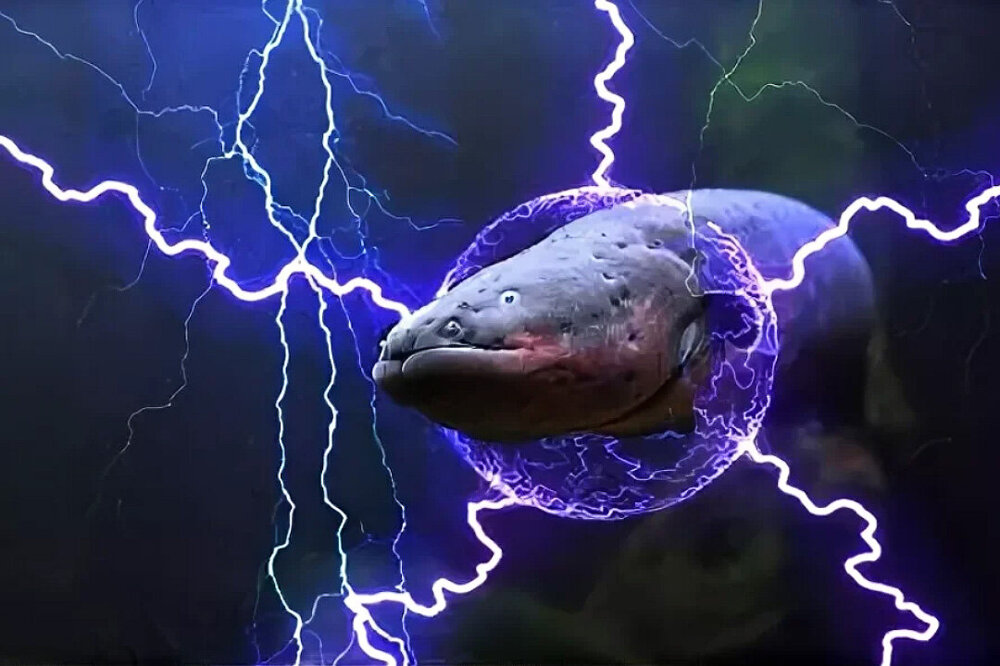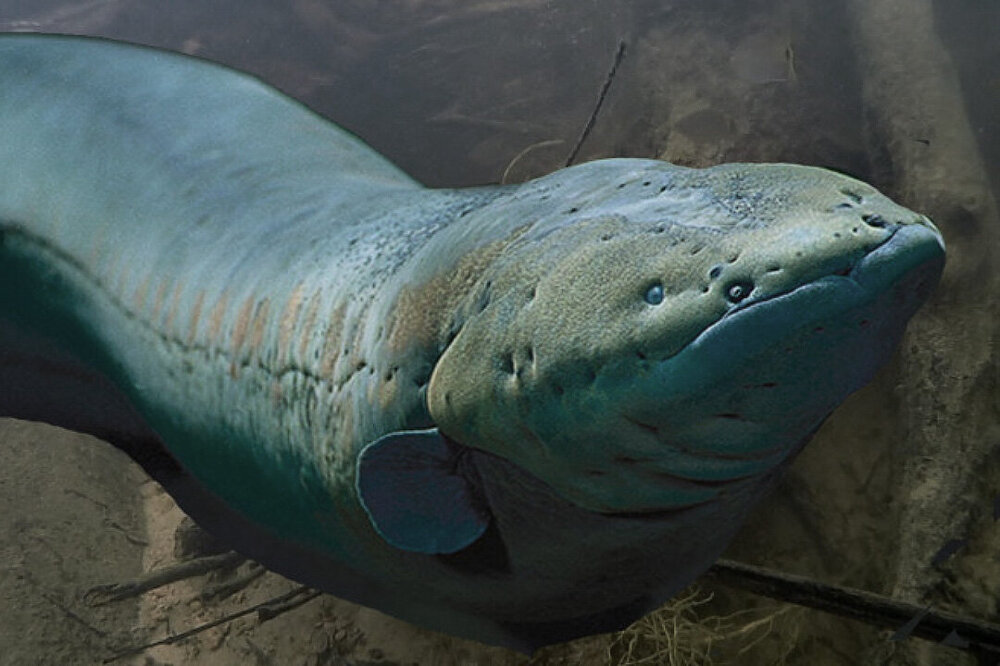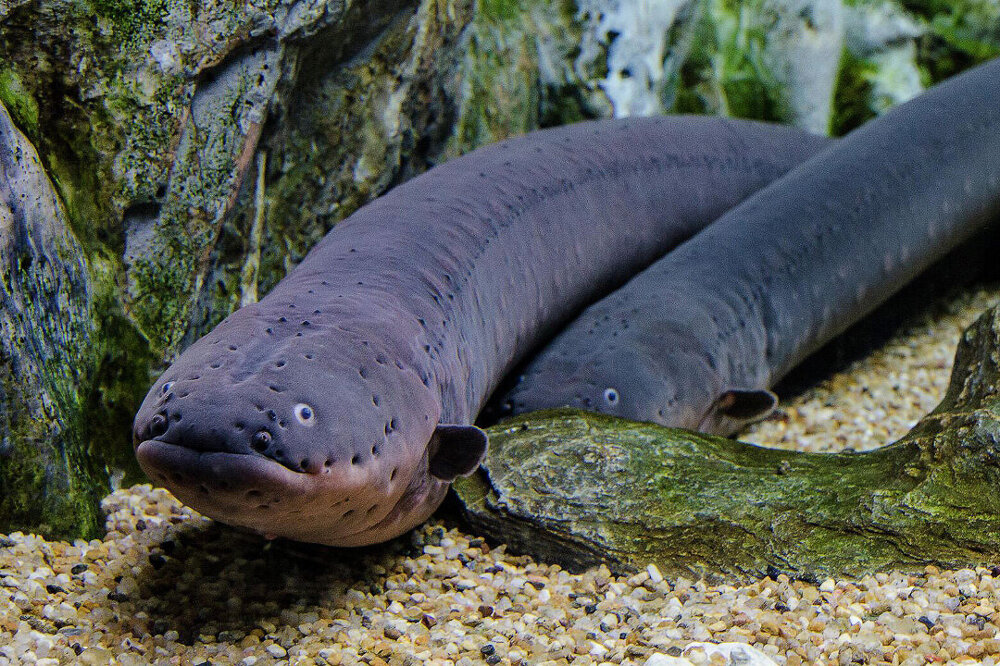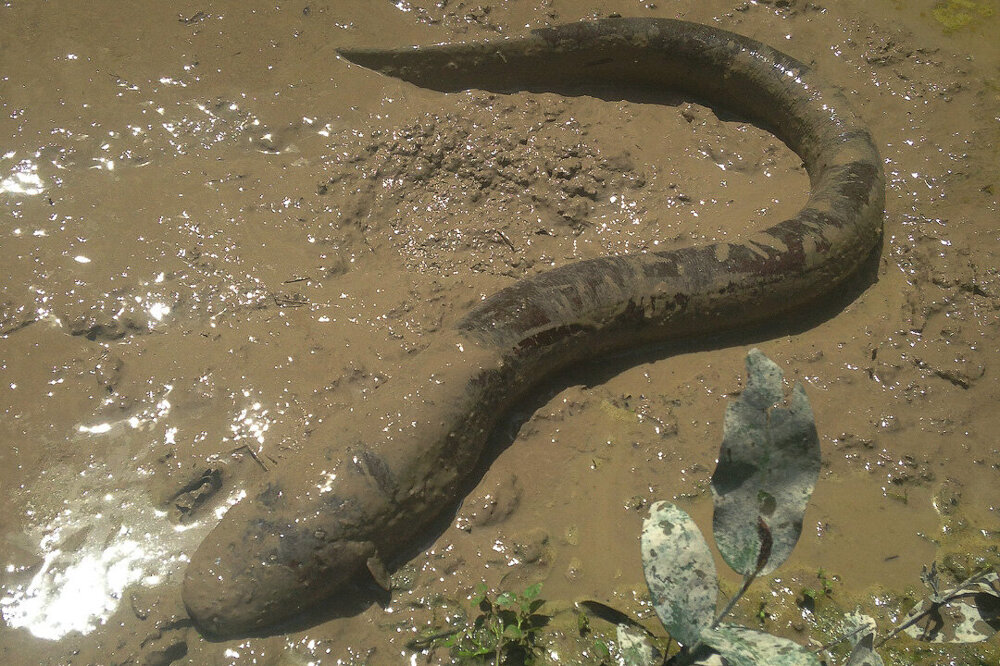Don’t get involved - it will kill: 800 volt fish, which are caught with the help of cows (5 photos)
If we teach children not to put their fingers in electrical sockets, then the Indians in the Amazon basin teach children not to put their fingers in these fish. 
So, let’s meet our guest today from South America – the electric eel. Strictly speaking, this is not a species of fish, but a genus (Electrophorus), consisting of three species. In addition, they are called eels because of their external resemblance to real eels, but in fact they are related to knife fish.
This amazing fish has turned its flesh into a battery, and is capable of storing electric current and using it for a variety of purposes, from detecting prey using electrolocation, to performing the “I am Zeus” performance, hitting enemies and prey with powerful “peruns”. 
The voltage of these fish is very respectable: the weakest species generates more than three hundred volts, and species with a more advanced electrical circuit can sting the offender using a voltage of about eight hundred fifty volts!
This kind of tension is enough to kill a young caiman or a small anaconda. Having learned from bitter experience, predators, growing up, develop a reflex to avoid this fish that is unpleasant for them. 
Since the Amazon jungle has nowhere to buy batteries or connect to the power grid, our heroes learned to generate and accumulate current on their own. And for this they have three paired organs located in the muscles along the entire body. They consist of electrocytes - special cells that can open ion channels and allow sodium to pass through, which changes polarity and creates a potential difference. The command to produce current is given by neurons in the brain.
It is interesting that, unlike marine fish (for example, electric stingrays), which live in salt water, which conducts current better, the electric eel has learned to arrange its cells in a series circuit, where each cell increases the voltage of the fish. This allows efficient use of current in fresh water. 
It is noteworthy that despite the fact that even anacondas and caimans prefer not to mess with these “thunderbolts,” local Indians willingly eat it, since the meat of electric eels is of high quality. Since the Indians do not have rubber boots, in order to prevent a premature meeting with the Apostle Peter, before catching a fish, they literally empty it.
To do this, they release a herd of cows into the river, which cause a fuss there. The fish discharge themselves against the cows, which stoically endure the discharges. Where should they go? For dinner there can be either eel or beef. When the eels are discharged, the Indians go into the water and catch them with spears. 





















